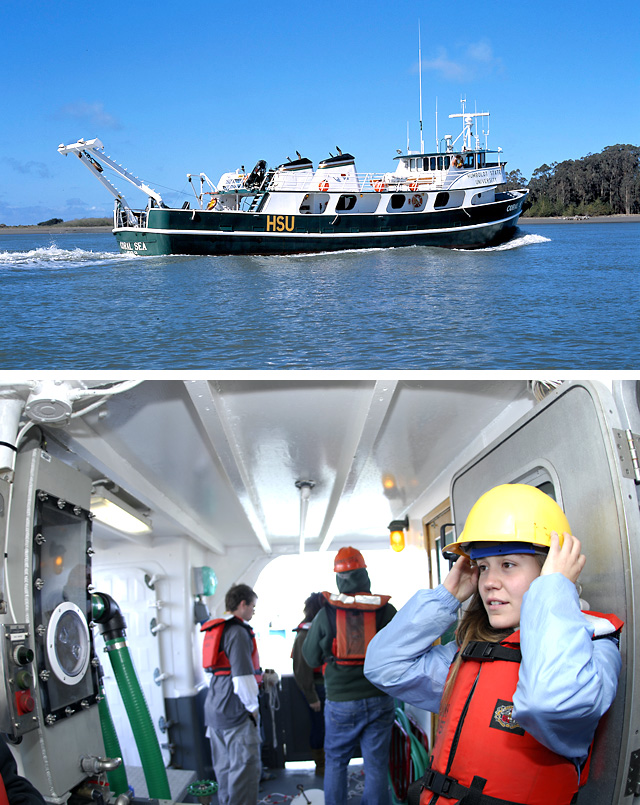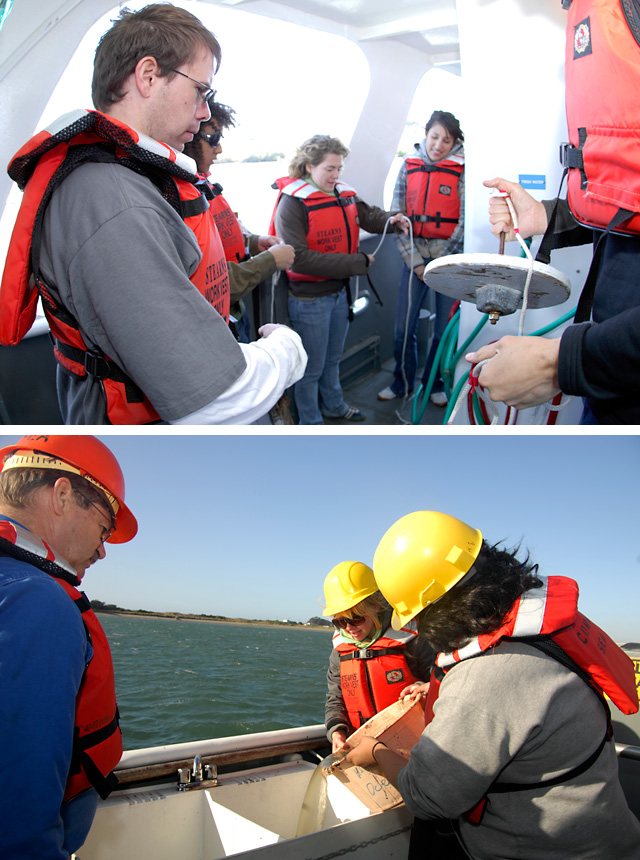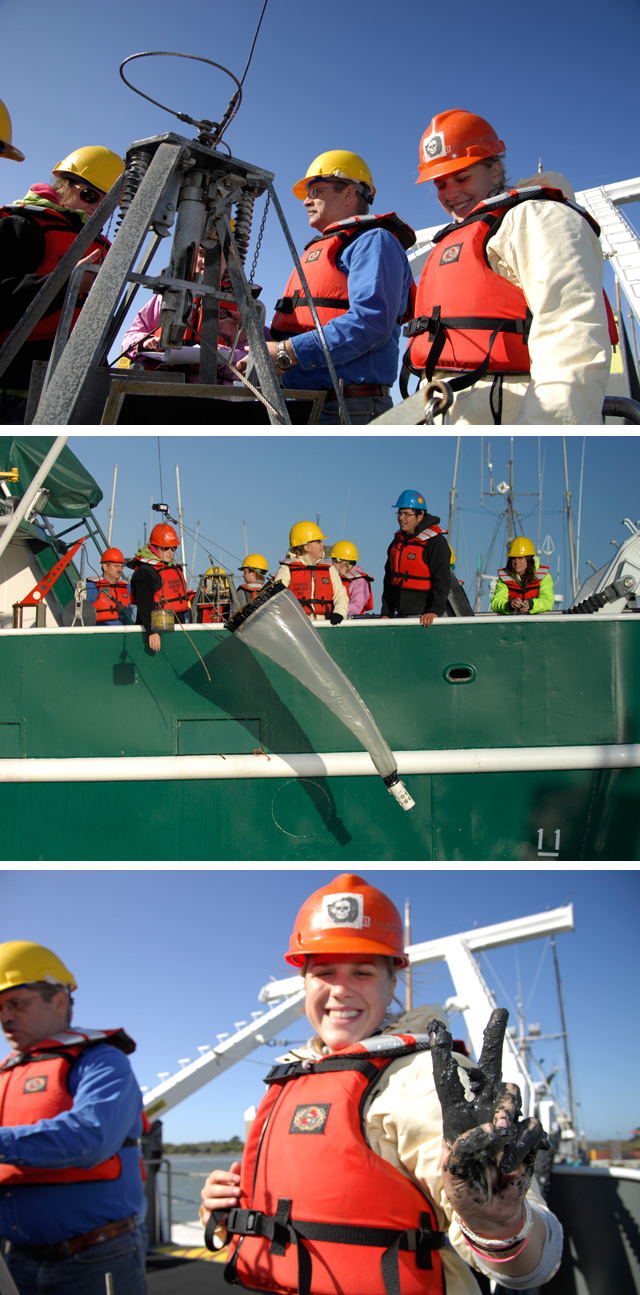Oceanography students, along with classmates from Biology, Fisheries, Wildlife and beyond, work one-on-one with professors on their own research projects.
They’re also likely found contributing to ongoing ocean monitoring conducted by the National Oceanic and Atmospheric Administration.
Humboldt State NOW has been wanting to send someone to spend a day aboard the Coral Sea, and we got our chance last fall. Photographer Kellie Jo Brown went out with the crew and Professor Jeff Borgeld’s Oceanography 109 students. OCN 109 is a general education course open to all majors and currently meets Lower Division Area B requirements. For more information on all of Oceanography’s offerings, visit their website..
All Photos Kellie Jo Brown / Humboldt State University

Top: The Coral Sea is seen entering Humboldt Bay.
Bottom: Students from Professor Jeff Borgeld’s Oceanography 109 course hang out before embarking on the Coral Sea. / Kellie Jo Brown, Humboldt State University

Top: Students get ready to use a secchi disk. When suspended from a rope, the device can be used to measure water clarity, which is useful in detecting suspended sediment that can point to underwater erosion. It can also be used to understand algae, nutrient or zooplankton levels, all of which contribute to the ecosystem’s health.
Bottom: Students pour a bottom sample from the Smith-MacIntyre Grab Sampler into one of the ship’s onboard sieves. The sieve allows water to be separated from the sample, revealing the organisms living within.

Top: Professor Borgeld (in blue) instructs students how to operate the Smith-MacIntyre Grab Sampler. The sampler is outfitted with a large bucket (not shown) that instantly closes upon impact with the sea floor, scooping up whatever is there.
Middle: Students retrieve a half-meter zooplankton net. It’s necessary to spray the nets with salt water to remove any loose sediment and to keep the tiny ocean creatures alive.
Bottom: This student gets a real taste of hands-on learning after the Smith-MacIntyre Grab Sampler dumps its muddy load in the ship’s sieves.